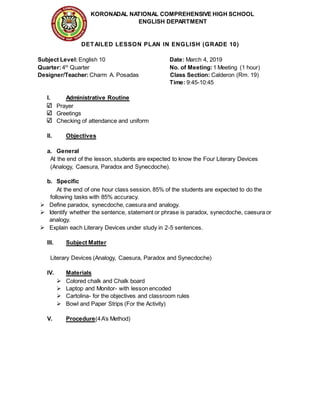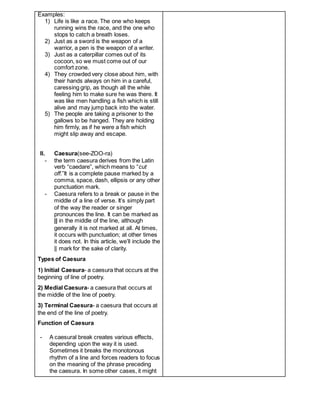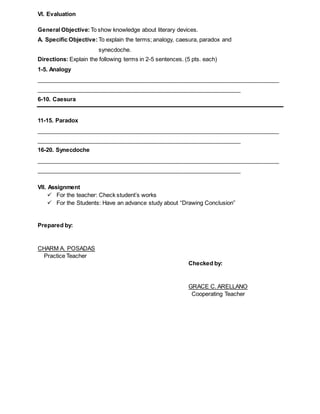The document provides details of an English lesson plan for 10th grade students. The lesson plan aims to teach students about four literary devices: analogy, caesura, paradox, and synecdoche. The plan outlines classroom activities including an introductory jumbled letters activity to engage students, followed by a discussion of the four devices where students will define, identify, and explain examples of each. Teaching methods include whole class discussion, examples presented on a monitor, and students reading the lesson objectives.









